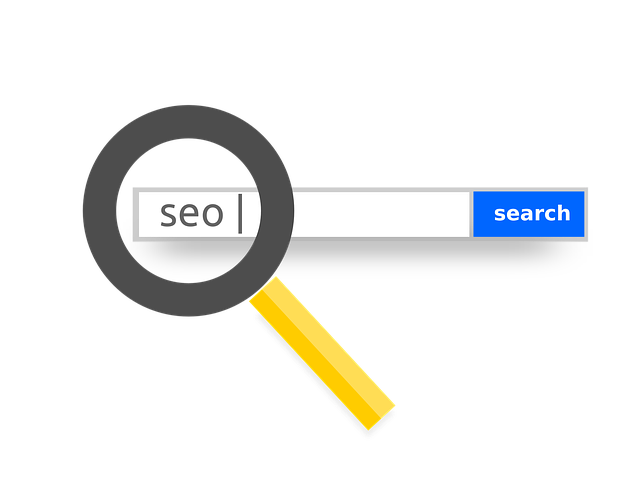Analyzing how visitors move around your site can shape your SEO strategies.
So how can you use this data?
Every visitor follows a path when they land on a site.
This journey is filled with information such as which pages were visited, which links were clicked, and which page was the last to be exited.
Imagine that you enter a store and walk through all the aisles.
Knowing which products catch your attention and which are ignored helps the store owner to improve their sales strategy.
In the same way, by analyzing analytical data on your website, you can determine which content attracts attention.
Click-through rates (CTR) show which pages are driving visitors to.
If a page has a high CTR, the content or title of that page is highly attractive.
However, low click-through rates indicate a problem with the content or keywords.
Understanding the target audience properly is a critical step to update your content strategy.
When you know your audience well, you can produce content that matches their expectations and increase your site’s engagement.
Visitor behavior is not limited to click-through rates.
Conversion rates show on which pages visitors take the actions you targeted.
To increase these rates, it is essential to improve the user experience.
When users spend more time on the page, it encourages them to take action.
So, the more engaging the content on your site, the higher your conversion rates will be.
Data analysis is a dynamic part of SEO.
Tracking visitor behavior is the key to improving your site’s success.
Remember, with the right analytics and strategies, you can leave a lasting mark in the digital world.
Visitor Behavior: Strengthen Your SEO Strategies!
Using Analytics Tools, you can see which pages users spend more time on and which content is of interest.
Think of it like a trip to a museum; if the exhibits don’t interest you, you won’t hesitate to move on to the next exhibit.
In the same way, users are more likely to engage with content that interests them. During the Content Development phase, it is critical to optimize your content to ensure that users get the information they are looking for.
You should create articles that are informative and add value, not full of keywords.
Being an authority in the eyes of visitors will help them spend more time on your site and help search engines rank you higher. Conversion Rates are another important indicator of visitor behavior.
What do users do when they come to your site?
Are they shopping, or are they content with just browsing?
By identifying your goals and creating content accordingly, you can get users to take action.
For example, if you’re selling a product, you can use strong visuals and compelling descriptions to persuade potential customers.

Without understanding your visitors, it’s unrealistic to expect your SEO efforts to be effective, right?
Understanding Visitor Behavior with Data Analytics: The Road to Success
Analyzing visitor behavior is like a detective collecting clues.
Data such as which pages are viewed more, which links are clicked, and so on, reveals the interests of your visitors.
Using this data, you can determine which areas you should focus on to improve the user experience.
For example, if a product page has a high exit rate, this may indicate that the content or design of the page needs to be revised.
When analyzing data, it is very useful to segment your visitors.
This allows you to create customized marketing strategies for each group.
For example, targeting new visitors and loyal customers differently can lead to more effective results.
Understanding the behavior of each segment provides a great opportunity to create content that will appeal to them.

By examining which blog posts are shared the most or which products get the most attention, you can optimize your content.
Remember, creating content that is relevant to users’ interests increases the likelihood of them returning to the site.
Data analytics is not just about playing with numbers; it’s also about finding a way to create a meaningful connection with your visitors.
By understanding their needs and expectations, you can improve their experience and achieve more success.
The Importance of Visitor Behavior for SEO: Why It Shouldn’t Be Ignored

So, why do we care so much about these behaviors?
First of all, users’ interactions on the site are carefully monitored by search engines.
If users are staying on your site for a long time, navigating between pages and sharing your content, search engines see this as a positive sign.
But there is a question: Does your site meet these criteria?
The time it takes visitors to leave a site shows how effective the user experience is.
A site that loads quickly and has a user-friendly design attracts visitors.
Just as the shelves are organized and accessible when you enter a library, your website needs to be organized and streamlined.
If your site is cluttered and slow, visitors will quickly go elsewhere.
A good user experience not only keeps visitors, but also increases your conversion rates.
Analyzing visitor behavior gives you valuable insights.
By observing which content attracts more attention, which pages visitors stay on longer, you can improve your strategies.
For example, if you notice that one of your blog posts is attracting a lot of attention, you can focus on similar topics and produce more content.
This also gives you an advantage in terms of search engines, because when you offer relevant content, both users and search engines prefer you.
Visitor behavior also has a big impact on conversion rates.
When people engage with content on your site, they are more likely to develop trust and loyalty to your brand.
This keeps visitors coming back.
Remember, every return is a potential customer.
Taking visitor behavior into account will not only boost your SEO success, but will also help you build a long-term customer relationship.
Visitor Behavior and SEO: Facts Backed by Statistics
Speed and User Experience: Users can bounce from slow-opening sites.
So, the speed of your page is a factor that directly affects visitor behavior.
Fast loading times lead to more engagement and conversions. Mobile Compatibility: Nowadays, the number of users visiting websites on mobile devices is growing rapidly.
If your site is not mobile-friendly, users will most likely turn to another option.
This will negatively affect your SEO performance. Content and Interaction: Quality and interest attractive Creating content helps users spend more time on your site.
Elements like visual content, videos and infographics increase engagement.
People like to digest information visually. Targeting and Analytics: It is critical to use analytics tools to understand visitor behavior.
Using tools like Google Analytics to track how long people spend on which pages will help you shape your content strategy.
Remember, it’s hard to take the right steps without good analysis.
There is a strong link between visitor behavior and SEO.
By observing users’ experiences on your site, you can develop more effective strategies.
And that means better SEO performance as a result!
Frequently Asked Questions
Why Data Analysis is Important?
Data analysis is an important tool that supports decision-making processes and reveals trends and patterns.
It helps businesses improve their performance, use resources more effectively and gain competitive advantage.
What is Visitor Behavior?
Visitor behavior is a concept that analyzes how a person moves through a space or digital platform, what actions they take and their preferences in the process.
These behaviors are evaluated to improve the user experience and increase the effectiveness of services.
Which Tools Can I Use to Analyze Visitor Behavior?
You can use tools such as Google Analytics, Hotjar, Crazy Egg to analyze visitor behavior.
These tools track user interactions and provide detailed information about page views, click maps and user flows.
The Relationship Between SEO and Visitor Behavior
SEO aims to attract more visitors by increasing your website’s visibility in search engines.
Visitor behavior determines the interactions of users on the site and the impact of these interactions on SEO.
The time visitors spend on the site, click-through rates and interactions are taken into account by search engines and play a decisive role in ranking.
How Can I Interpret Visitor Data?
To interpret visitor data, use analytics tools on your website to examine metrics such as number of visitors, page view duration and user interactions.
This data will help you understand user behavior and improve your content strategy.